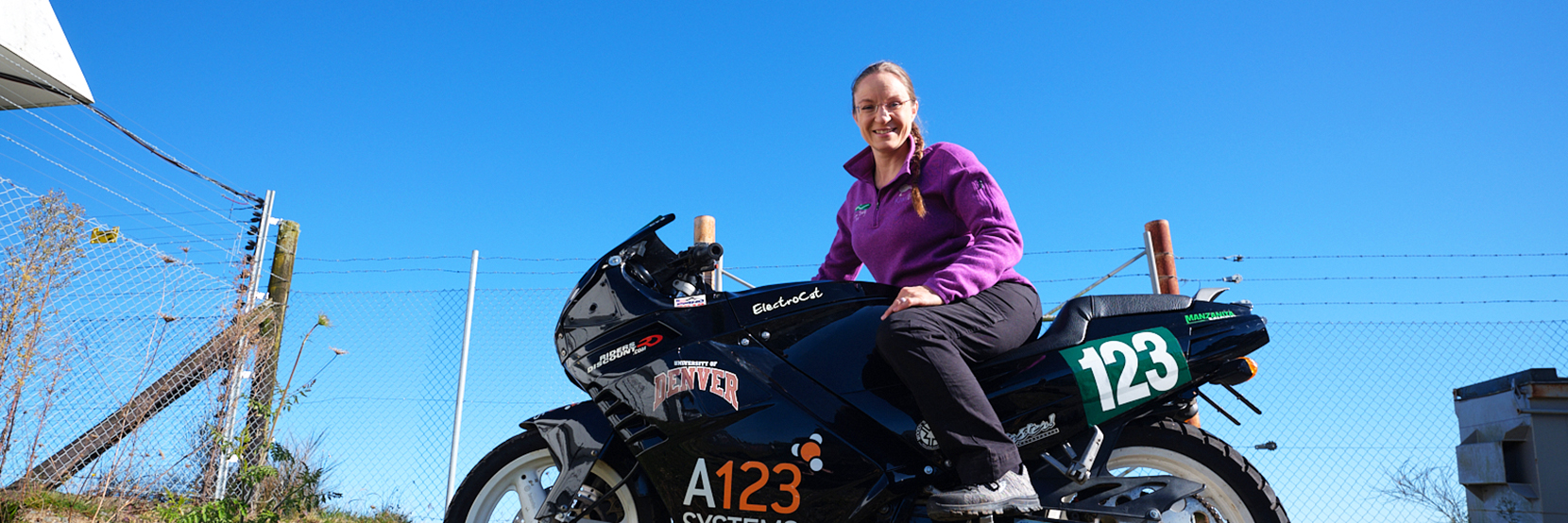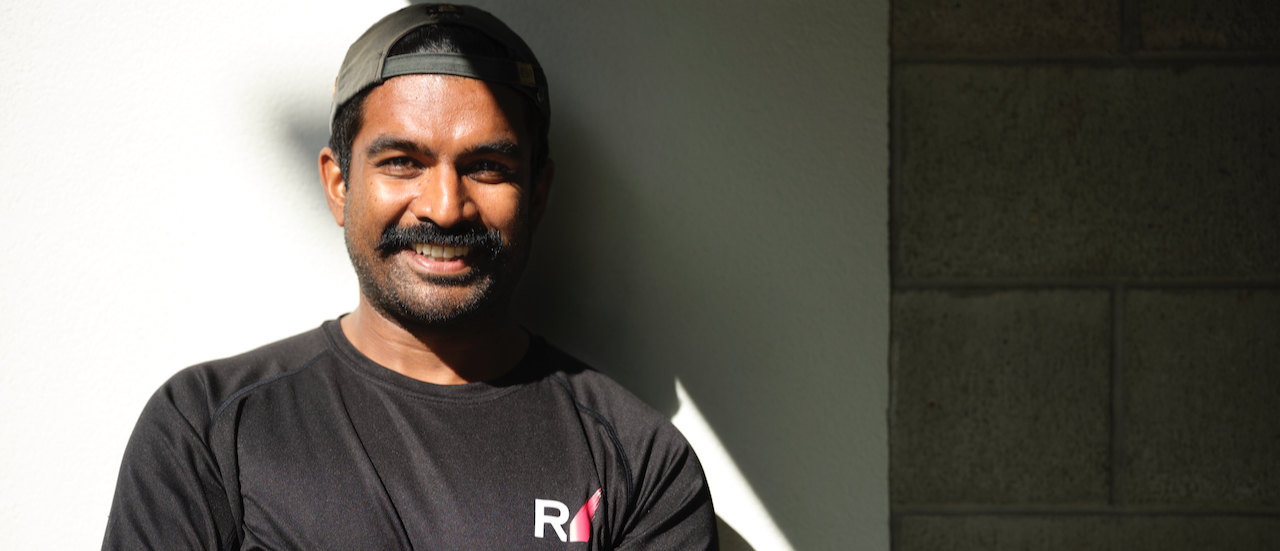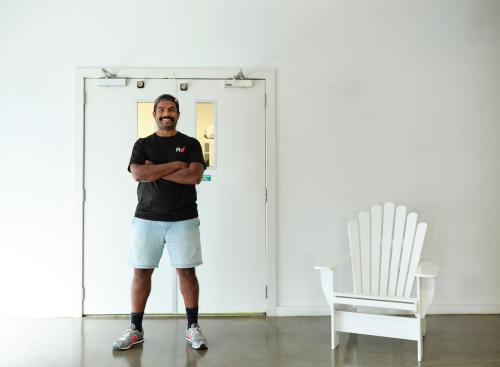
Q&A: Eva Håkansson, motorcycle engineer and speed racer
We talk to mechanical engineer Eva Håkansson about building electric motorbikes and winning land speed records.

Jo Percival talks to Danushka Abeysuriya, EV aficionado and founder of Auckland tech company Rush Digital – who has worked with international giants Disney and Microsoft – about digital projects and saving the planet, one EV at a time.
I have always loved computers and I learnt to program from a young age. I studied software engineering at the University of Auckland and I graduated when the iPhone was pretty new – probably still in its second generation – but I saw that the future was going to be in mobile and digital. When I started Rush we were primarily doing software engineering for video games, but we were in the right place at the right time to pick up some work from Disney and Microsoft. We grew the team off the back of that work.
Companies started asking us to help solve their business problems with technology, which was a great opportunity. While software engineering is valuable, there are a lot of countries that have fantastic engineers at a fraction of the cost, so we didn’t see a long-term, competitive future in that. Instead, we asked ‘how can we take a one-line statement about a business problem and throw the sledgehammer of technology at it.’ That’s effectively how the company has grown. We have nearly 100 people now.
Technically I’m CTO, but these days I’m more across innovation. I work to keep the company out front from a technology perspective.
Building the NZ Covid Tracer App. While we’ve had our 15 minutes of fame with that one, it really was a career highlight because I don’t know if that kind of situation will ever repeat itself.

At the beginning of the Covid outbreak there was zero certainty, but looking at countries like Singapore it became clear that digital contact tracing was the way to go. Our main consideration when building the app was reliability. This was an app that had to live on three to four million phones and not break. We also had to respect people’s privacy, which meant sitting at the really conservative end of the spectrum – if we took too liberal of a view we would have killed the whole thing because no one would want to use it. From a technology perspective the app was not that innovative. We designed it to be really simple and really fast. People had to be able to get out their phone and it would just work.
I’m spending a lot of my time on a piece of IP about image recognition and artificial intelligence for recognising things in video footage. In the future, computers are going to interact with the physical world a lot more. If you think about the analogy of human brain capacity, about 60% is dedicated to visual processing. If you close your eyes and try to grab something on your desk, the task becomes exponentially harder. So, our thesis is that computers are in that state right now – they have simply been trusting the input information we give them to complete a task. If we can figure out how to give them access to image information then they can do much more interesting things because they’re interacting with the physical world and can respond to stuff that might otherwise require complex sensors or other components.
I think about this quite a lot, actually. It’s kind of like the invention of a machine gun. I understand shotguns and individually-loaded guns which shoot one bullet and then it takes you a minute to reload. But computers have the potential to get to the same space as automatic weapons. At the moment we’ve got this rudimentary single shot technology, but as technology progresses it’s going to become much more automated. I do wonder whether it’s the right thing to be doing. But that’s why Rush has our mission statement: to design and build technology that better serves humankind. It’s an acknowledgement that we have a certain amount of developer privilege, and as a company we try to work on things that will either keep the social needle neutral or make things better. It’s either pure, wholesome entertainment for companies like Disney that’s not hurting anybody, or its technology that’s actually moving us forward.
I’m a huge petrolhead. I love cars – as an engineer, a designer and a speed freak. But I’d also rather not contribute to transforming the planet into a giant oven. EVs caught my attention as a technologist. I believe that they’re the best compromise that we can all make to achieve the quickest reduction in CO2 emissions. Period.
In my view, the jobs to be done are: 1. Stop burning gasoline and diesel which make up 30-40% of the world’s CO2 emissions. 2. Eliminate embedded carbon from things like infrastructure and the cost of manufacturing these vehicles. 3. Improve the environmental impact of creating EVs through better batteries, etc. What everyone is trying to do is find a silver bullet to solve climate change. But there is no silver bullet. We all just need to do more with less. Burn less fuel. Use less plastic. Drive less. Use more public transport. EVs are the fastest thing we can do that will have the highest impact with the least amount of effort, comparatively.
I drive a 2011 Nissan Leaf. I also have an electric motorbike – a vmoto, and I have two older German cars – an BMW E30 Touring, and what I call ‘the Moroccan Taxi,’ an E230 Mercedes from the very early 80s in 1970s Arabian-Sheik brown.
For sheer driving joy, the BMW E30. From a practicality perspective, the Nissan Leaf, which is 100% the best to use day to day. It’s a comfortable car, super quiet, super efficient. When people were complaining about fuel being nearly $4 a litre, I said ‘huh? What’s $4 a litre?’ It’s an 11 year-old vehicle and it still has 80-90km of range on an overnight charge. We use it every day.
The weirdest thing about the EV is that even at 11 years old it drives exactly like it did the day it rolled off the showroom floor because there’s no wear and tear. There’s no gearbox, there’s no clutch, there are no oil filters. I had to do a repair on the control arm, and the brake discs were still from factory. Because of the way you drive them – they’re an urban car – you brake lightly. So the electric motor is normally what slows you down first. The brake callipers pretty much never engage compared to an ICE vehicle. When servicing it I change the brake fluid, maybe, and check the under carriage every now and then.
This story is from the Spring 2022 issue of AA Directions magazine.